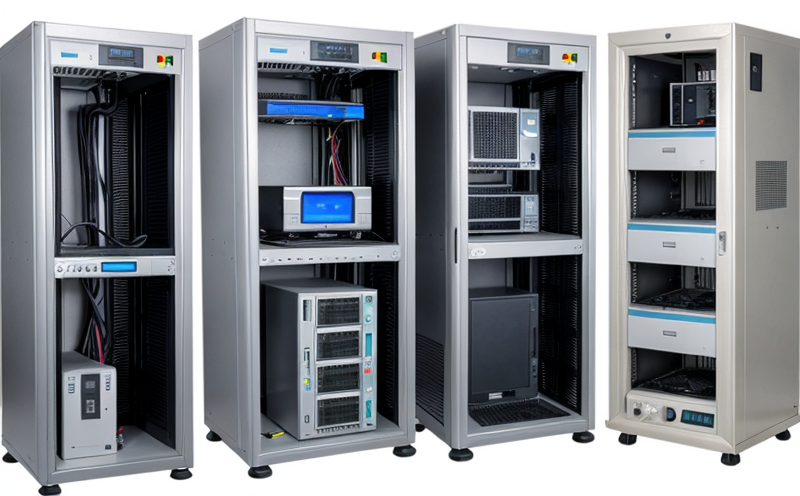Reliability and Endurance Testing for ICT Network Systems
The reliability and endurance testing of ICT (Information and Communications Technology) network systems is a critical component in ensuring robust, long-lasting performance. This service focuses on assessing the durability, longevity, and resilience of IT and telecom equipment under real-world conditions. The goal is to identify potential weaknesses or failures that could compromise system integrity during extended operational use.
ICT networks are integral to modern business operations, making it imperative to ensure their reliability and endurance. These systems must operate efficiently and securely for long periods without failure. Reliability testing involves subjecting the ICT network equipment to simulated usage scenarios that mimic actual field conditions. The test parameters include load capacity, temperature cycling, humidity exposure, vibration, and power supply fluctuations.
Endurance testing complements reliability by simulating extended operational use over a prolonged period. This ensures that the equipment can handle continuous operation without degradation in performance or failure. The testing process involves monitoring key performance indicators (KPIs) such as data throughput, latency, error rates, and system stability during sustained load conditions.
The specimen preparation for reliability and endurance testing is meticulous. It starts with selecting representative samples of the ICT network equipment that are typical of those used in real-world applications. The specimens undergo thorough cleaning and calibration to ensure accurate test results. Specialized fixtures may be required to simulate specific environmental stressors, such as extreme temperatures or mechanical shocks.
Instrumentation plays a crucial role in reliability and endurance testing. Automated testing systems equipped with advanced sensors and data acquisition devices are used to monitor the performance of the ICT network equipment continuously. These instruments can detect subtle changes in system behavior that might indicate impending failure. The data collected during testing is analyzed using statistical methods to determine the reliability and endurance characteristics of the equipment.
Reporting on the results of reliability and endurance testing is comprehensive, providing detailed insights into the performance and durability of the ICT network systems. Reports include histograms showing the distribution of test results, graphs illustrating key performance metrics over time, and tables summarizing statistical analyses. The reports also highlight any areas where the equipment did not meet specified criteria or where improvements are necessary.
By investing in reliability and endurance testing, companies can reduce maintenance costs, extend the operational lifespan of their ICT network systems, and enhance overall system reliability. This proactive approach to quality assurance helps businesses maintain a competitive edge in today's fast-paced technological environment.
Benefits
The benefits of reliability and endurance testing for ICT network systems are numerous and far-reaching. Firstly, these tests provide invaluable data that can be used to improve the design and manufacturing processes of IT and telecom equipment. By identifying weaknesses early in the development cycle, companies can implement corrective measures before products reach the market.
- Improved Product Quality: Testing ensures that ICT network systems meet or exceed industry standards for reliability and endurance.
- Cost Savings: Early detection of potential failures reduces the need for costly repairs and replacements later in the product lifecycle.
- Enhanced Reputation: A reputation for delivering reliable and enduring ICT network solutions can significantly enhance a company's standing in the market.
- Predictive Maintenance: By understanding how equipment will perform over extended periods, businesses can implement predictive maintenance strategies to minimize downtime.
In addition to these direct benefits, reliability and endurance testing also contribute to environmental sustainability. By extending the operational lifespan of ICT network systems, companies reduce waste and the associated environmental impact. This aligns with broader sustainability goals and can be a point of differentiation in an increasingly eco-conscious market.
International Acceptance and Recognition
The reliability and endurance testing for ICT network systems is recognized and standardized internationally, ensuring that the results are credible and widely accepted. The International Electrotechnical Commission (IEC) provides guidelines and standards for testing electrical and electronic products, including ICT network equipment.
- IEC 60252: This standard covers the general requirements for reliability testing of electrical and electronic apparatus.
- IEC 61934-2: This standard specifies test methods for assessing the endurance of ICT network systems under various environmental conditions.
Compliance with these international standards not only ensures that ICT network systems meet global quality benchmarks but also opens up opportunities for international trade and collaboration. Many countries have adopted IEC standards as a basis for their own national regulations, further enhancing the universal acceptability of reliability and endurance test results.
Competitive Advantage and Market Impact
The ability to perform reliable and enduring ICT network systems testing provides a significant competitive advantage in the market. Companies that invest in this service can differentiate themselves by delivering products with superior reliability, which translates into higher customer satisfaction and loyalty.
- Innovation: Reliability testing encourages continuous improvement in product design and manufacturing processes.
- Customer Trust: Consistently reliable products foster trust among customers, leading to repeat business and referrals.
- Market Leadership: By setting high standards for reliability and endurance, companies can establish themselves as leaders in the ICT network equipment market.
The impact of reliability and endurance testing extends beyond individual companies. It contributes to the overall stability and resilience of the ICT infrastructure that underpins modern society. Reliable ICT networks are essential for business operations, government services, and communication systems. Ensuring their reliability through rigorous testing helps maintain public confidence in these critical systems.





